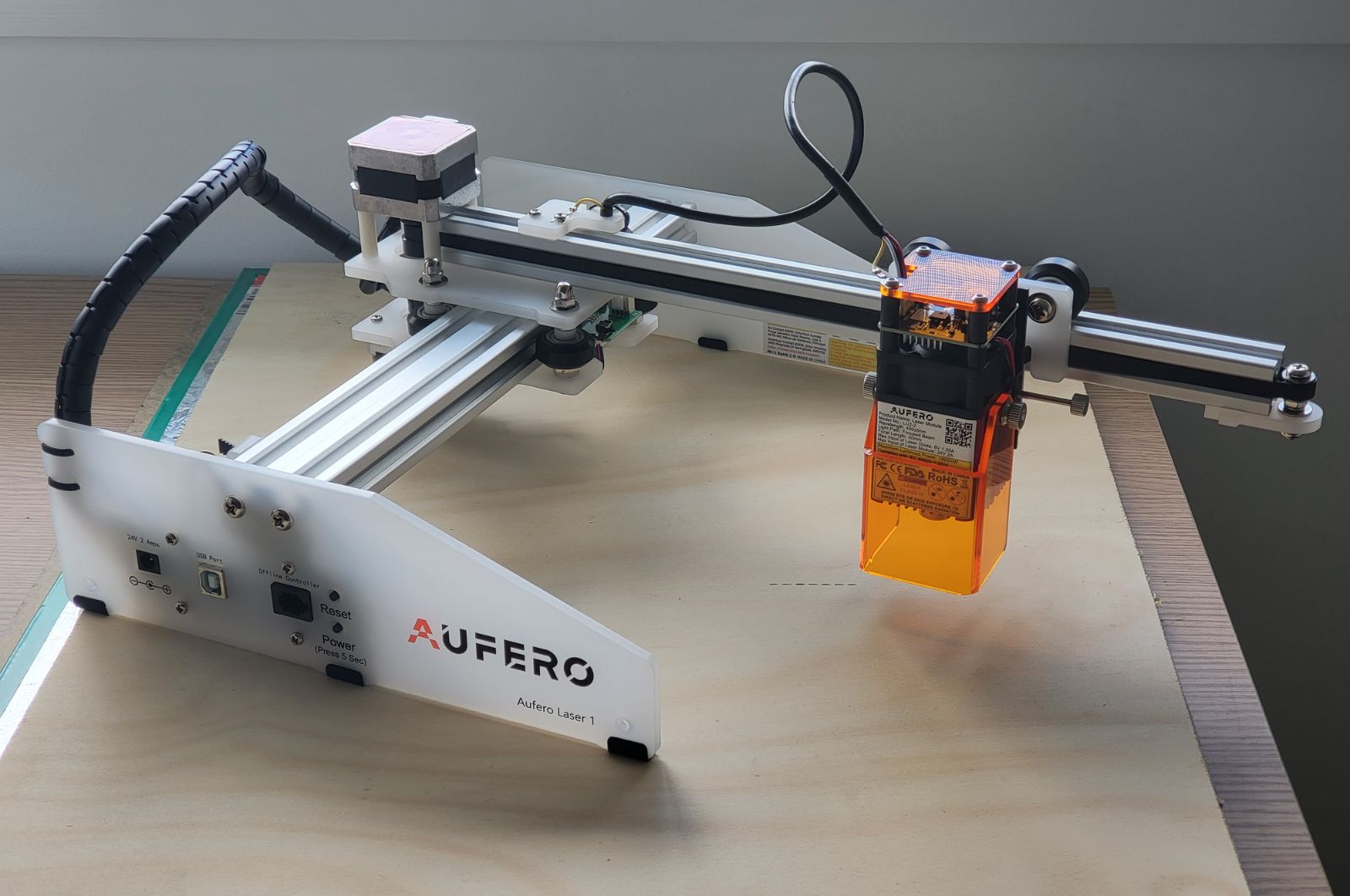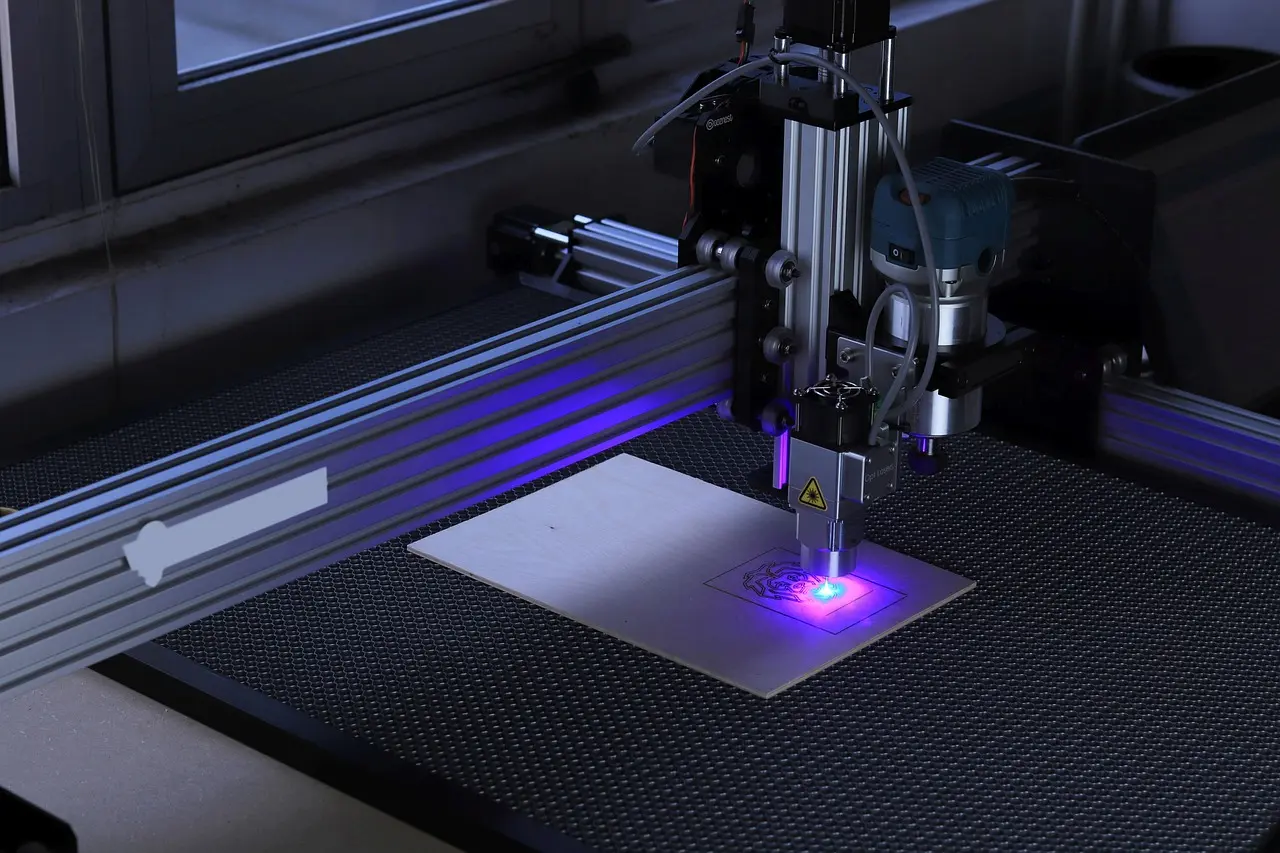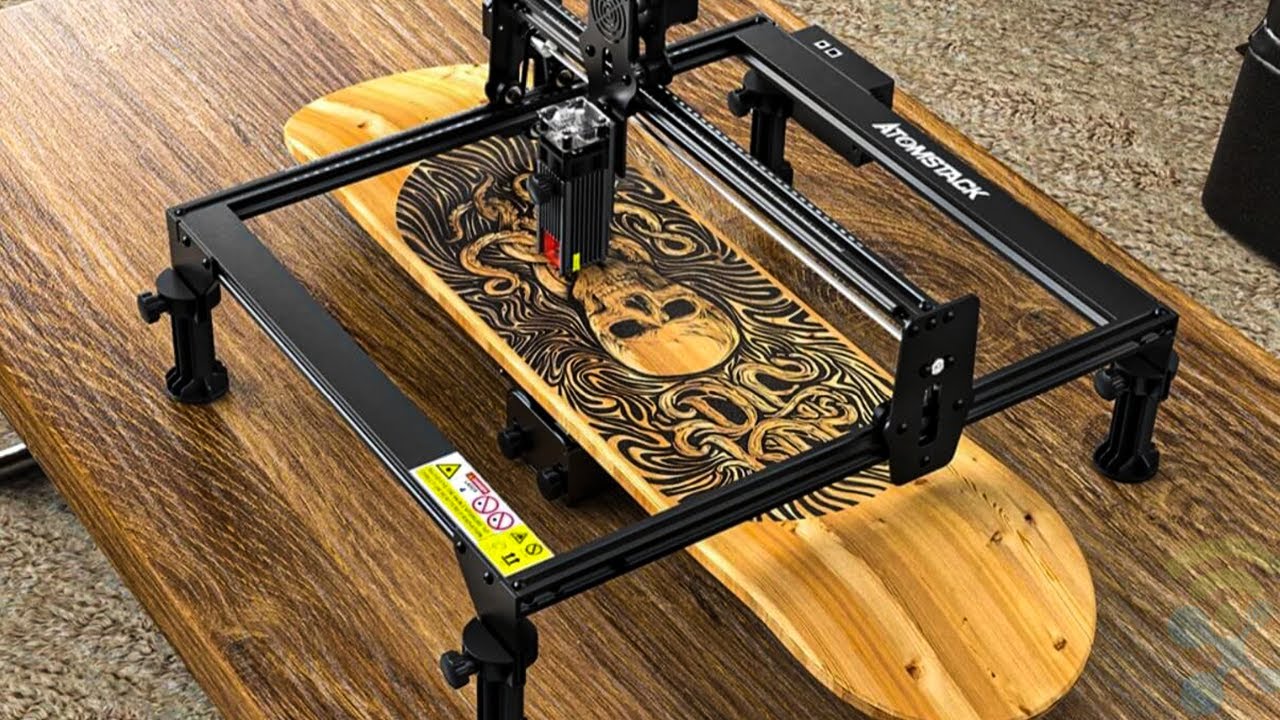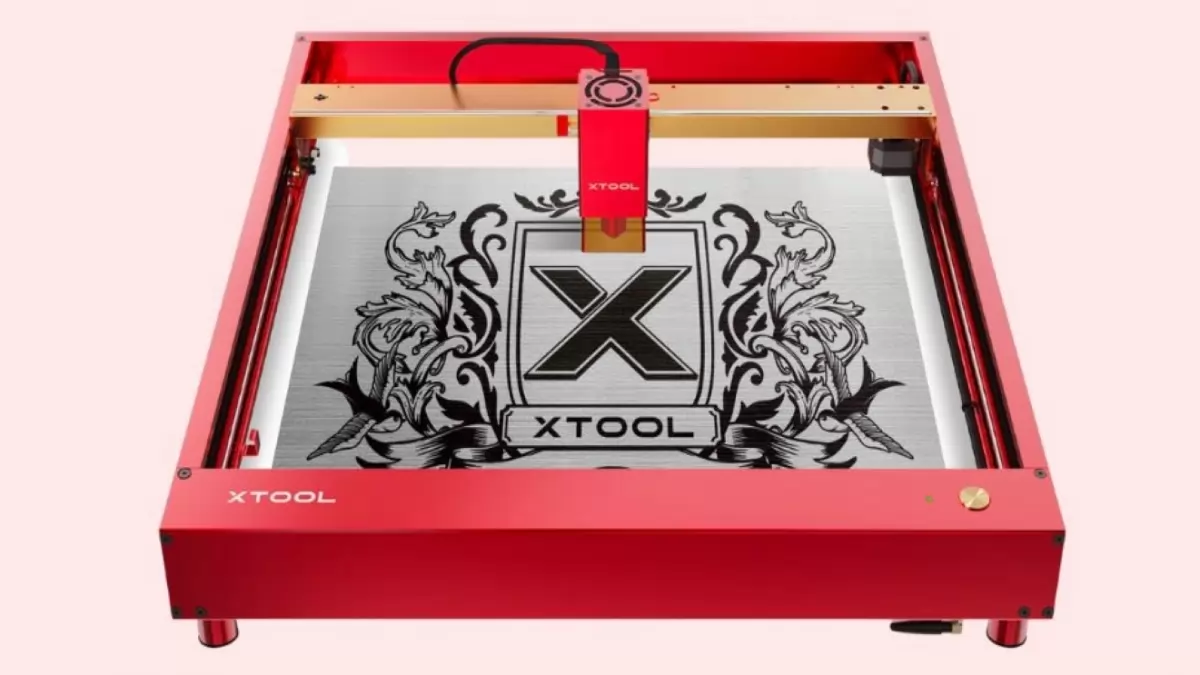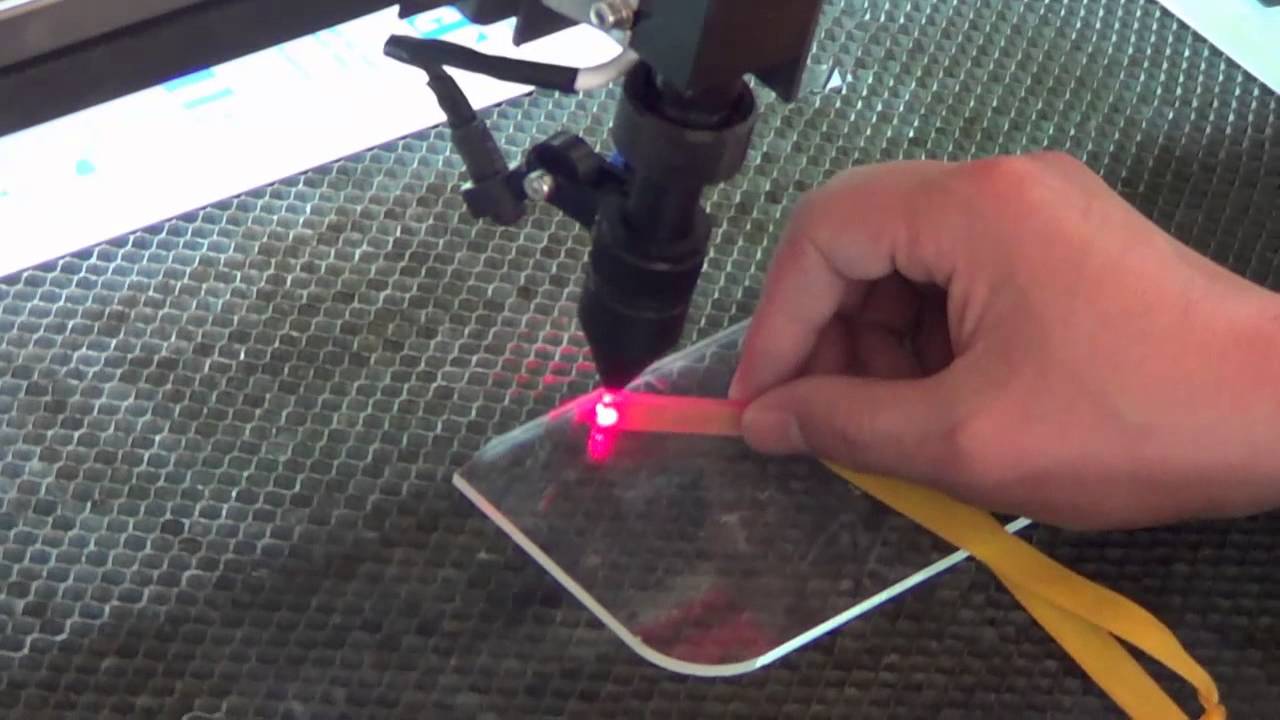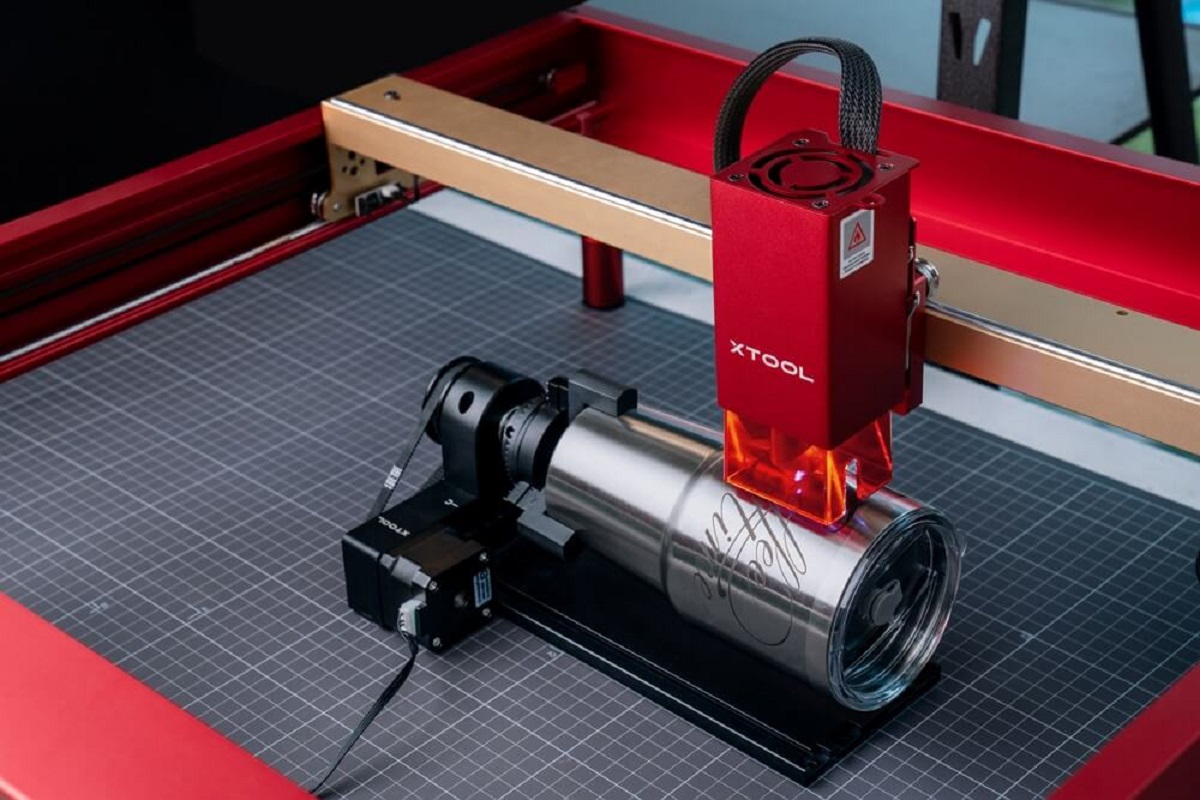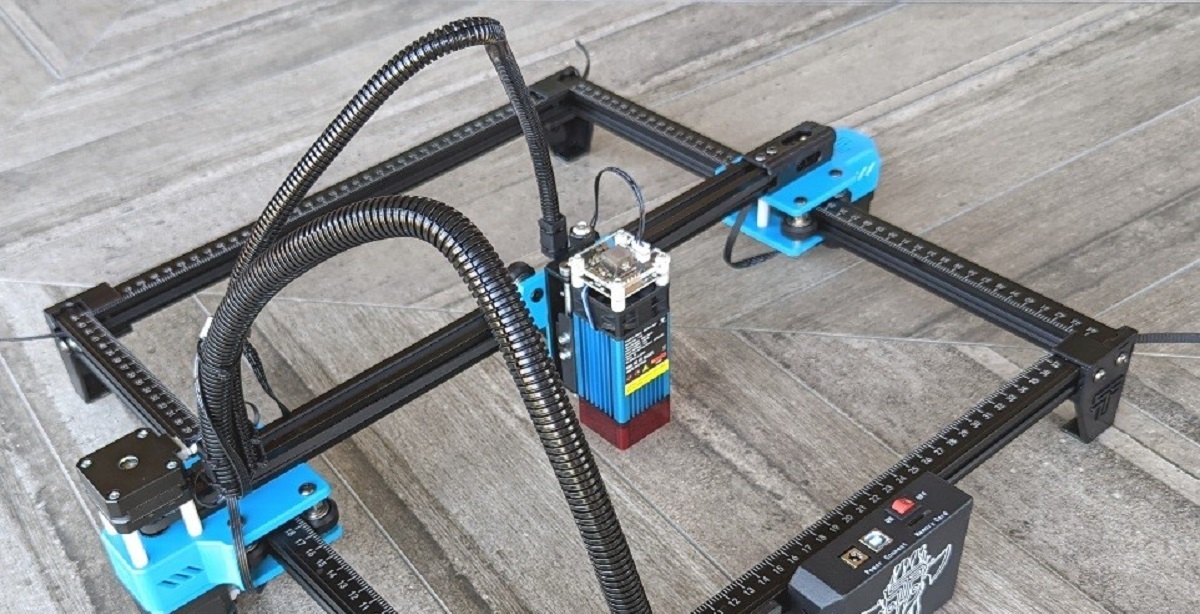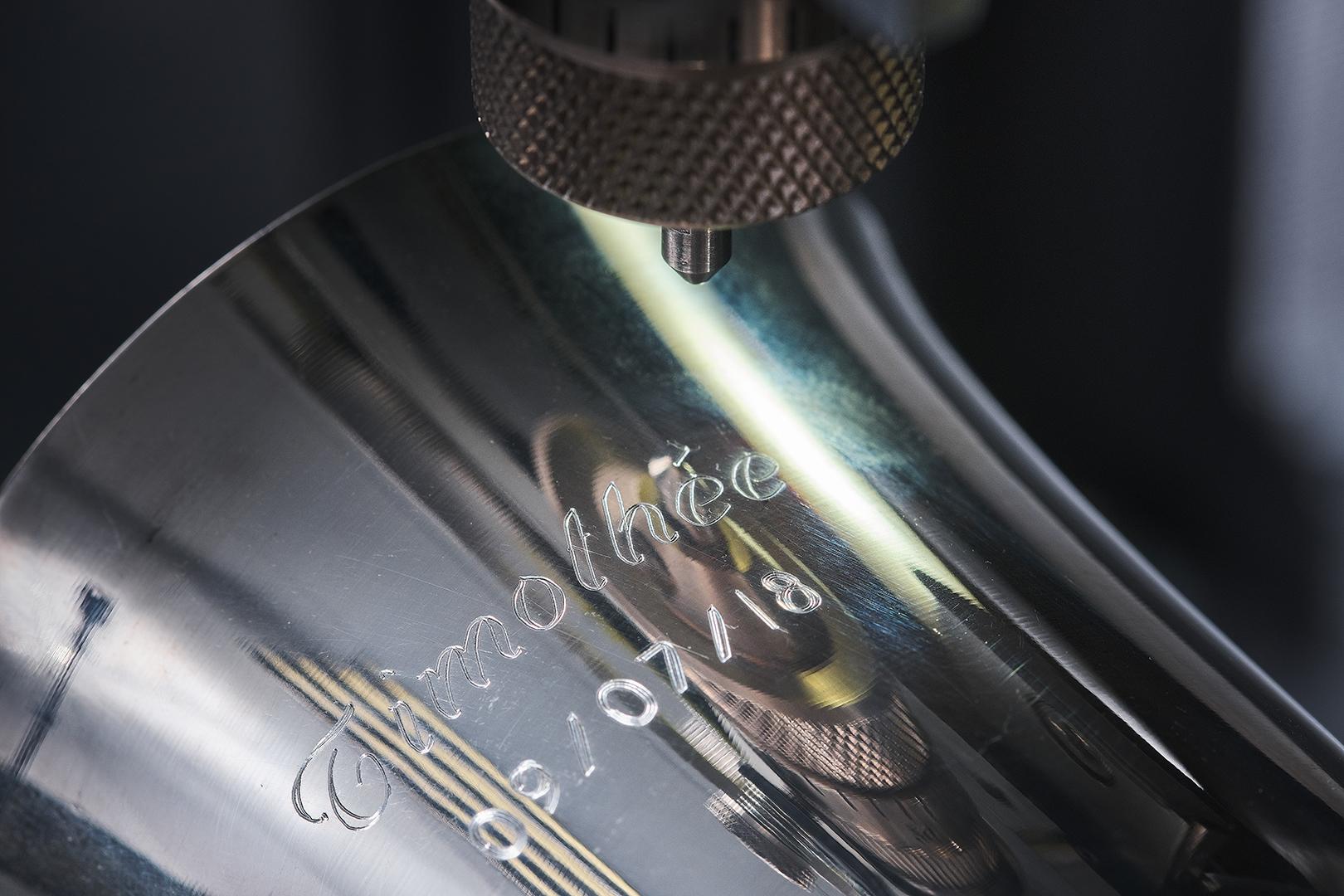Introduction
Welcome to the world of laser engraving! Laser engraving has become a popular method for etching designs onto various materials, including wood, metal, acrylic, and more. One of the key components of a laser engraving system is the laser engraver module. This module is responsible for producing the laser beam that creates the precise and intricate designs on the surface of the material.
In this article, we will delve into the fascinating world of laser engraver modules and explore one specific aspect – the smallest dot size achievable. The size of the laser dot has a significant impact on the level of detail and precision that can be achieved in the engraving process. Understanding the factors affecting dot size and its implications can help you make informed decisions when choosing a laser engraver module for your specific needs.
Whether you are a hobbyist looking to personalize your creations or a professional seeking to enhance your business capabilities, knowing the smallest achievable dot size can be crucial. We will discuss the technology behind laser engraver modules, the factors that influence dot size, and the practical applications where a small dot size is particularly advantageous.
By the end of this article, you will have a clear understanding of the role dot size plays in laser engraving and how it can impact your projects. So, let’s dive in and explore the exciting world of laser engraver modules and their smallest dot sizes!
Laser Engraver Module: An Overview
A laser engraver module is a device that contains a laser diode, optics, and control circuitry. It is designed to be integrated into a laser engraving system to create precise and detailed engravings on various materials. The laser diode emits a concentrated beam of light that is focused by the optics to create a small dot on the material’s surface.
The laser engraver module comes in different power ratings, typically measured in milliwatts (mW) or watts (W), that determine the intensity of the laser beam. The power rating plays a crucial role in the depth and speed of engraving. Higher power modules can achieve deeper engravings and faster processing times compared to lower power modules. However, it’s important to note that the dot size is not solely determined by the power rating of the module.
These modules are commonly used in various applications such as personalizing products, creating intricate designs on jewelry, engraving serial numbers or barcodes on industrial parts, and much more. They are versatile tools that offer immense possibilities for customization and branding.
Integration of a laser engraver module into a laser engraving system involves connecting it to a control board or controller that manages the movement of the laser beam and the overall engraving process. The control board provides the signals needed to activate and modulate the laser diode, allowing for precise control of the laser beam.
It’s also worth mentioning that laser engraver modules can be classified into continuous wave (CW) or pulsed types. Continuous wave modules emit a continuous laser beam, while pulsed modules emit short bursts of laser pulses. The choice between these types depends on the specific application requirements.
Overall, a laser engraver module is a fundamental element of a laser engraving system, responsible for generating the laser beam that enables the engraving process. It is important to understand the capabilities and specifications of the module to choose the right one for your desired application. Now that we have an overview of laser engraver modules, let’s delve into the fascinating technology behind them in the next section.
Understanding Laser Engraver Module Technology
To truly grasp the concept of the smallest dot size achievable with a laser engraver module, it’s essential to understand the technology behind it. Laser engraver modules are typically constructed using semiconductor lasers, specifically laser diodes. These diodes emit coherent light of a specific wavelength, which is then manipulated by optics to create the focused laser beam.
One of the key components of a laser engraver module is the laser diode. Laser diodes are small semiconductor devices that produce laser light when an electric current passes through them. The wavelength of the laser light is determined by the materials used in the construction of the diode.
The laser diode’s emitted light is collimated and shaped using lenses and mirrors, which help to focus the laser beam into a tight spot or dot on the material’s surface. The size of this dot is influenced by several factors, including the focal length of the optics, the laser diode’s divergence angle, and the distance between the module and the material. A shorter focal length and a smaller divergence angle tend to result in a smaller dot size.
Additionally, the power of the laser beam also affects the dot size. Higher power modules tend to produce larger dot sizes due to the increased energy and intensity of the laser beam. Knowing the desired dot size and understanding how the laser module’s specifications, particularly the optics and laser diode characteristics, can help in selecting the right module for your specific needs.
Furthermore, the control circuitry of the module plays a crucial role in regulating the laser diode’s power and maintaining a stable laser output. It ensures consistent beam quality and intensity, which is essential in achieving precise and accurate engravings. The control circuitry also provides safety features to protect against overheating and overcurrent.
Overall, the laser engraver module technology involves the use of laser diodes, optics, and control circuitry to generate a focused laser beam. Understanding how these components work together and their impact on dot size can help you make informed decisions when choosing a module for your laser engraving needs.
Now that we have explored the technology behind laser engraver modules, let’s dig deeper into the factors that influence the size of the laser dot in the next section.
Factors Affecting the Size of the Laser Dot
The size of the laser dot produced by a laser engraver module is influenced by various factors. Understanding these factors is essential in determining the smallest dot size achievable for your specific application. Let’s explore the key factors that affect dot size:
1. Optics: The focal length of the lenses and the quality of the mirrors in the module’s optical system play a crucial role in determining the dot size. A shorter focal length results in a smaller dot size because the laser beam is focused more tightly. High-quality optics also help maintain beam quality, ensuring precise and consistent dot size.
2. Laser Diode Characteristics: The divergence angle and beam quality of the laser diode impact the dot size. A smaller divergence angle indicates that the laser beam spreads out less, resulting in a smaller dot size. The quality of the laser diode contributes to beam stability and consistency, which is vital for achieving a consistent dot size.
3. Distance to Material: The distance between the module and the material being engraved affects the dot size. As the module is moved closer to the material, the dot size becomes smaller due to the increased focusing of the laser beam. Conversely, moving the module farther away will result in a larger dot size.
4. Laser Power: The power of the laser beam has a direct impact on the dot size. Higher power modules generally produce larger dot sizes, while lower power modules can achieve smaller dot sizes. It’s important to find the right balance between power and dot size based on your engraving requirements.
5. Material Properties: The type and properties of the material being engraved can influence the dot size. Some materials may absorb or reflect the laser beam differently, leading to variations in dot size. It’s important to test the module on different materials to determine the optimal dot size for each one.
By considering these factors, you can better understand how they contribute to the size of the laser dot produced by a laser engraver module. When selecting a module, it’s crucial to choose one that allows for adjustments in these factors to achieve the desired dot size for your specific application.
Now that we have explored the factors influencing dot size, let’s move on to the question of what the smallest dot size achievable is in the next section.
What Is the Smallest Dot Size Achievable?
The smallest dot size achievable with a laser engraver module depends on various factors, as discussed earlier. While it is difficult to specify an exact measurement for the smallest dot size, it is possible to achieve incredibly small dots with the right combination of module specifications and settings.
In general, dot sizes can range from a fraction of a millimeter to a few millimeters in diameter. Laser engraver modules with higher power ratings tend to produce larger dots, while lower power modules can achieve smaller dots. However, it’s important to note that power alone is not the sole determinant of dot size. Other factors such as optics, laser diode characteristics, and distance to the material also play significant roles.
Some high-quality laser engraver modules can produce dot sizes as small as 0.05 mm in diameter or even smaller. Achieving such small dot sizes requires precise optics with short focal lengths, laser diodes with low divergence angles, and close proximity between the module and the material. Additionally, fine-tuning the power settings and ensuring stable beam quality contribute to achieving smaller dot sizes.
It’s worth mentioning that achieving the smallest dot size comes with certain limitations. Extremely small dots may require longer engraving times, as the laser needs to traverse the surface more times to cover the desired area. Additionally, engraving very small dots on certain materials, such as uneven or porous surfaces, may not yield optimal results due to variations in material absorption and reflection.
In practical terms, the smallest dot size achievable will depend on the specific requirements of your application. Consider factors such as the intricacy of the design, the level of detail required, and the material properties. Consulting with experts or conducting tests with different laser engraver modules and settings can help determine the optimal dot size for your specific needs.
Now that we have discussed the smallest dot size achievable, let’s explore the practical applications where laser engraver modules with small dot sizes are particularly advantageous.
Applications of Laser Engraver Modules with Small Dot Size
Laser engraver modules with small dot sizes open up a wide range of applications where intricate and detailed engravings are necessary. The ability to produce precise and small dots enables these modules to achieve exceptional levels of detail on various materials. Let’s explore some common applications where laser engraver modules with small dot sizes are particularly advantageous:
1. Jewelry and Personalization: Laser engraving is widely used in the jewelry industry to create intricate designs, patterns, and personalized engravings on rings, pendants, bracelets, and more. A laser engraver module with a small dot size can produce fine details, allowing for highly precise engravings on delicate jewelry pieces.
2. Electronics and Industrial Applications: Laser engraving is utilized in the electronics and industrial sectors for engraving serial numbers, logos, or barcodes on components, circuit boards, and other industrial parts. Small dot sizes enable clear and legible engravings, ensuring accurate identification and traceability.
3. Artistic and Decorative Engravings: Laser engraving is a popular choice for creating artistic designs and decorative engravings on various materials such as wood, acrylic, glass, and metal. Modules with small dot sizes can achieve intricate and detailed engravings, adding aesthetic value to personalized gifts, home decor items, and artwork.
4. Medical and Dental Applications: Laser engraving plays a crucial role in the medical and dental fields, where precision and accuracy are paramount. Laser-engraved medical instruments, implants, and dental tools can be marked with identification codes, patient information, or company logos. Small dot sizes ensure clear and durable markings on these critical devices.
5. Textile and Leather Industry: Laser engraving is used to create intricate patterns, logos, and designs on textiles and leather products. Modules with small dot sizes allow for the precise etching of detailed designs on fabrics and leather, enhancing product customization and branding.
6. Security and Anti-Counterfeiting Measures: Laser engraving is employed to create security features, such as microlettering, hidden patterns, or serial numbers, on important documents, banknotes, certificates, and other sensitive items. Small dot sizes enable the production of highly intricate and difficult-to-replicate security measures.
These are just a few examples of the diverse range of applications where laser engraver modules with small dot sizes are valuable. The ability to achieve precise and detailed engravings opens up endless possibilities for customization, personalization, and branding in various industries.
Now that we have explored the applications, let’s dive into examining the pros and cons of laser engraver modules with small dot sizes.
Pros and Cons of Laser Engraver Modules with Small Dot Size
Utilizing laser engraver modules with small dot sizes offers several advantages for achieving precise and detailed engravings. However, it also comes with its limitations. Let’s explore the pros and cons of using laser engraver modules with small dot sizes:
Pros:
1. Precision and Detail: Laser engraving with small dot sizes enables the production of highly intricate and detailed engravings, allowing for precise customization and personalization of various materials.
2. Improved Aesthetic Appeal: Small dot sizes result in crisper and cleaner engravings, enhancing the overall aesthetic appeal of the engraved product or material.
3. Increased Versatility: Laser engraver modules with small dot sizes provide versatility by allowing for the engraving of intricate designs on a wide range of materials, including wood, metal, glass, acrylic, and textiles.
4. Enhanced Branding: The ability to achieve fine details with small dot sizes enables the creation of high-quality logos, brand names, or custom designs, helping businesses establish a strong brand presence on their products.
5. Anti-Counterfeiting Measures: Small dot sizes are crucial in creating intricate security features that are difficult to replicate, making laser engraver modules with small dot sizes valuable for anti-counterfeiting measures.
Cons:
1. Longer Engraving Time: Achieving small dot sizes usually requires slower engraving speeds, resulting in longer processing times, especially when engraving large or intricate designs.
2. Material Compatibility: Some materials may not be suitable for achieving the desired dot size, as variations in absorption and reflectivity can affect the engraving quality and precision.
3. Cost: Laser engraver modules with small dot sizes and high precision optics may come at a higher price point compared to modules with larger dot sizes. Increased precision often translates to higher manufacturing costs.
4. Fragility: Small dot sizes require delicate optics and precise adjustments, which can make the module more fragile and susceptible to damage if mishandled or exposed to harsh conditions.
5. Limited Depth Control: Laser engraver modules with small dot sizes may have limitations in engraving depth. Achieving both small dot sizes and deep engravings simultaneously can present challenges.
Considering these pros and cons is crucial when selecting a laser engraver module with a small dot size. It’s important to weigh the advantages against the potential limitations and determine the best fit for your specific engraving needs.
Now that we have explored the pros and cons, let’s move on to some tips for choosing the right laser engraver module.
Tips for Choosing the Right Laser Engraver Module
Choosing the right laser engraver module with the desired dot size and specifications is crucial for achieving optimal results in your engraving projects. Here are some essential tips to consider when selecting a laser engraver module:
1. Determine Your Engraving Needs: Understand the specific requirements of your engraving projects, including the materials you will be working with, the level of detail desired, and the size of the engravings. This will help you identify the necessary dot size and power requirements.
2. Consider the Laser Power: Determine the power level needed for your application. Remember that higher power modules may produce larger dot sizes, so consider the trade-off between power and dot size based on your engraving requirements.
3. Assess Optics and Laser Diode Quality: Optics and laser diode quality play a significant role in achieving small dot sizes. Look for modules with high-quality lenses and mirrors that provide sharp focus and minimal beam divergence. Ensure that the laser diode has low divergence and produces stable and consistent laser output.
4. Evaluate the Focal Length: The focal length of the optics is crucial for controlling the size and focus of the laser dot. Shorter focal lengths tend to result in smaller dot sizes. Consider the specifications of the module’s optics to ensure they align with your engraving needs.
5. Test Different Modules: If possible, test different laser engraver modules before making a final decision. See how they perform on your desired materials and evaluate the dot sizes and engraving quality they can achieve. This hands-on approach can provide valuable insights into the module’s capabilities.
6. Consider Ease of Integration: Ensure that the module you choose can be easily integrated into your existing setup or laser engraving system. Check compatibility with your control board or controller and ensure that the module comes with the necessary connectors and documentation for smooth integration.
7. Seek Expert Advice: If you’re unsure about which laser engraver module to choose, consult with experts in the field. They can provide valuable insights based on their experience and help you make an informed decision that aligns with your specific requirements.
By following these tips, you can increase your chances of selecting the right laser engraver module that meets your engraving needs, including the desired dot size, power, optics, and overall compatibility with your setup.
Now that we have covered the tips for choosing the right laser engraver module, it’s time to summarize the key points and wrap up our discussion.
Conclusion
Laser engraver modules are essential components in the world of laser engraving, responsible for producing the laser beam that creates intricate and precise engravings on various materials. Understanding the factors that affect the size of the laser dot and the capabilities of these modules is crucial for achieving optimal results in your engraving projects.
We explored the technology behind laser engraver modules, including the role of optics, laser diode characteristics, and control circuitry. These components work together to generate a focused laser beam with a specific dot size. While it is difficult to specify the exact smallest dot size achievable, it is possible to achieve remarkably small dot sizes with the right combination of module specifications and settings.
We also examined the applications where laser engraver modules with small dot sizes excel, including jewelry, electronics, artistic engravings, medical and dental applications, textile and leather industry, and security measures. The ability to achieve precise and detailed engravings opens up endless possibilities for customization, personalization, branding, and anti-counterfeiting measures.
Furthermore, we discussed the pros and cons of laser engraver modules with small dot sizes. While they offer precise and detailed engravings, there are considerations such as longer engraving times, material compatibility, cost, fragility, and depth control. It’s important to evaluate these factors based on your specific needs when choosing a laser engraver module.
Lastly, we provided valuable tips for choosing the right laser engraver module, including determining your engraving needs, considering laser power and quality optics, evaluating focal length, testing different modules, considering ease of integration, and seeking expert advice.
By considering these factors, understanding the technology, and following these tips, you can select the ideal laser engraver module that meets your engraving requirements, achieves the desired dot size, and ensures precise and outstanding results in your projects.
Now armed with this knowledge, you’re ready to explore the world of laser engraver modules and unleash your creativity in the realm of laser engraving!







